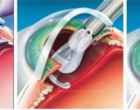Exposure of neonatal infant rats to 2 weeks of hyperoxygenation followed by return to room air leads to pulmonary alveolar wall fibrosis, enlargement of the alveolar space and inflammation. This is analogous to pulmonary fibrosis in premature human neonates, the treatment of which represents a significant unmet medical need. Similar lesions are also found in smoke inhalation injury and other pulmonary conditions leading to alveolar wall fibrosis. Endpoint determinations include lung function, histopathology, immunohistochemistry and alveolar measurements including the mean lineal intercept (MLI) method. Currently, a new method of assessment using digital image analysis provides accurate, robust and reproducible data on alveolar wall thickness and alveolar size that is comparable or superior to MLI measurements.
At CBI we offer a robust, validated model of bronchopulmonary dysplasia in rats. Call our office or visit our website for more information, a white paper and validation data.



